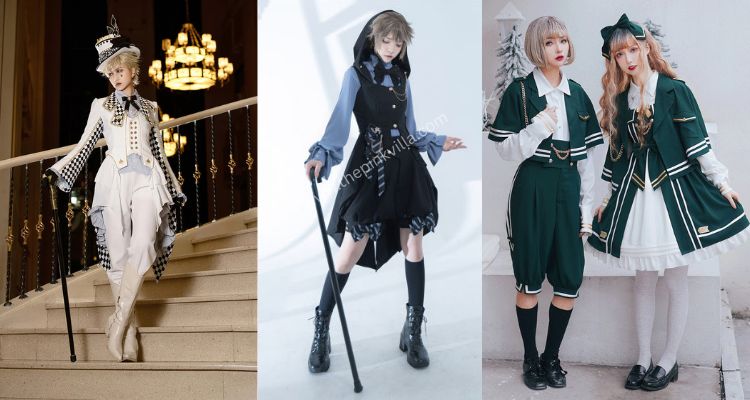Have you come across the term ouji fashion in the realm of Japanese street style at all? If so, you’re in for a treat! So, let’s take a walk through the world of ouji fashion — also called prince style — and see what happens to come to mind at the time, as if we were having coffee with friends.
What is Ouji Fashion and Why is it Called That?
The term “ouji” translates to “prince” in Japanese. style based on the appearance of princes dating back to the time of the Victorians and Edwardians. Think tailored jackets working with elegant shorts, ruffled shirts with fancy hats. It’s formal yet playful! While ouji can be considered a “boy style,” it’s not only for men. Rather, ouji incorporates traditional men’s wear elements with playful, making space for people of all genders who want to inhabit this princely space.
Why is it Called Ouji Fashion?
The word “ouji” literally means “prince” in Japanese. This fashion style draws directly from European noble clothing. Its main purpose? Channeling the spirit of a charming prince—confident, bold, and a bit mysterious. That’s why designers settled on ouji as an accurate term. You won’t mistake this style for anything else—it stands out in every crowd!
Is Ouji an Aesthetic?
Yes, ouji fashion is definitely an aesthetic. You can spot its influence in nearly any Japanese style event or creative photography. Picture crisp jackets, knee-length “prince” pants, frilled collars, and grand hats. Ouji is about balance and harmony, with a flair for old-school elegance. If you love accessorizing, ouji is for you! Personally, I love how layering a vest over a tailored blouse transforms my mood from casual to princely chic.
What Aesthetic is Ouji?
You may ask: what sets ouji apart from other fashion aesthetics? Ouji fashion is androgynous, embracing both masculine and soft, playful elements. You’ll find gothic ouji, with dramatic dark colors and careful trims, or sweet ouji, filled with pastels and playful touches. You have traditional ouji which is leaning towards a softer, vintage look, commonly in dark velvet and wool and muted tones like burgundy and navy. The result is always smart, neat and oh-so-cute.
For more interesting & informative articles visit The Pinkvilla
Building Your Ouji Wardrobe
Starting out can be a lot of fun. Here’s what I and many others include:
Tailored jackets or vests, with unique buttons or trims
Blouses with frills, ruffles, or bow ties
Prince breeches, or knickerbockers—neither too short nor too long
Knee-length socks and fancy shoes, such as lace-up boots
Accessories: top hats, berets and even pocket watches for a fanciful feel
I remember my first ouji outfit—mixing a thrifted vest with antique-style shorts and tall socks. It felt daring but empowering!
Who Wears Ouji Fashion?
Ouji fashion isn’t limited by gender or age. It’s popular in Japanese street fashion, cosplay circles, and among anyone who enjoys a fresh way to express themselves. While some believe ouji is just for boys, the reality is anyone can embrace it. Girls, non-binary folks, and even older adults have all adopted ouji in their own ways.
Ouji and Lolita: What’s the Difference?
Many ask if ouji fashion is just the “boy” version of Lolita fashion. There are, of course, similarities — each appeals to a history of Europeanness, both treasure ornate detail and both flourish in creative communities. But ouji is all about structured, androgynous looks, while Lolita emphasizes flouncy skirts and girlish shapes. I have also enjoyed attending events where Lolita and ouji watchers mix and mingle — there is so much creativity in every outfit.
Final Thoughts
If you’re bored with typical trends, ouji fashion promises endless fun and flair. Transitioning from jeans and tees to a sharp ouji ensemble honestly changed how I see myself. It’s expressive, full of history, and always open to your personal twist. Next time you want to feel like royalty, why not give ouji fashion a spin? We could even coordinate matching looks for a future tea party!
Dare to be a prince—let ouji fashion show you how.

